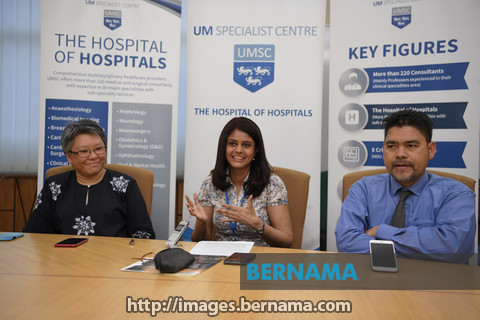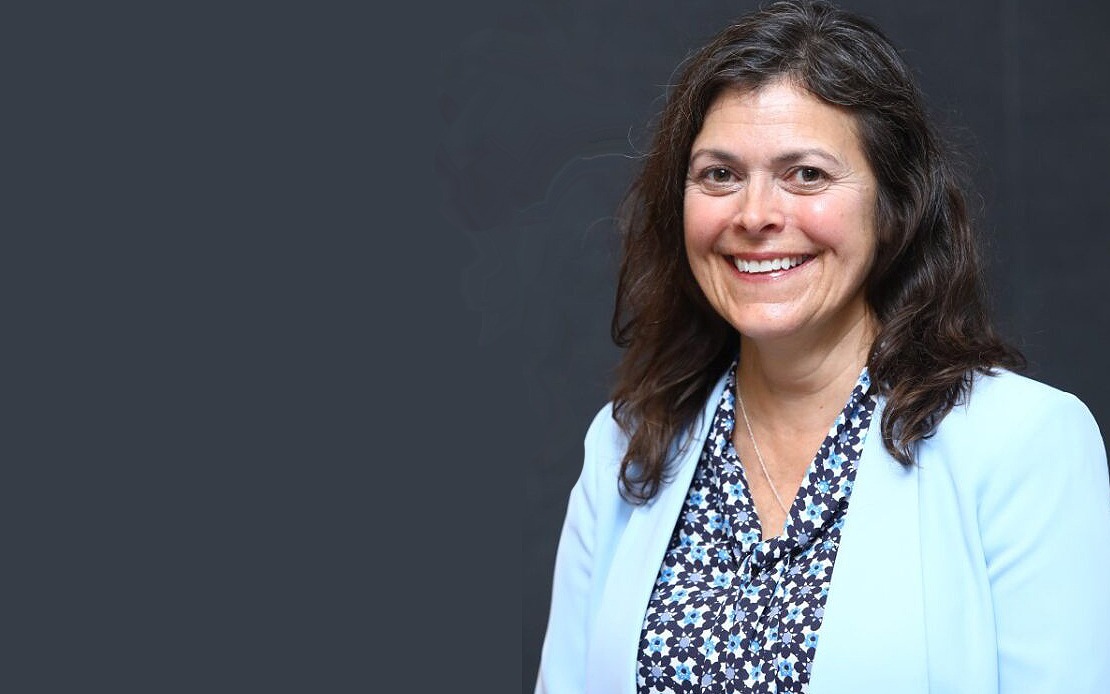Achy, Creaky Joint Pain In The Elderly

By Nabilah Saleh
KUALA LUMPUR (Bernama) – Osteoarthritis (OA) is the most common form of arthritis and seen increasing due to population ageing.
The disease occurs when the cartilage protecting the ends of bones wears down over time.
Although osteoarthritis can damage any joint, the disorder commonly affects joints in the knees, ankles, hips, spine, hands and shoulders.
Globally, OA is the most common articular disease. While there is no study on the number of Malaysians suffering from osteoarthritis, it is estimated that more than 60 per cent of the worldwide population aged 65 and above has some form of the disease and is more common among women.
The impairment to the joints may not be reversed, but it certainly can be well managed. It can be a distressing condition for the individual.
Should the younger generation be equally aware of the disease and potential risk factors?
In an interview with Bernama recently, UM Specialist Centre ( UMSC ) medical experts shared their professional thoughts about the disease, and how the younger generation could equip themselves at an early stage to prevent OA to lead a quality lifestyle.
COMMON CAUSES
The common cause of this problem could vary from one person to another, depending on their age, lifestyle, professions, genetic, and not forgetting their physical aspect.
Professor Dr Azlina Amir Abbas, UMSC ’s renowned orthopaedic surgeon with vast expertise in orthopaedics (hip and knee replacements, trauma and autologous chondrocyte transplantation) said generally, most elderly patients were aware of their condition when they came for treatment.
“I have always given the analogy of a car tyre when explaining their condition. A car, if you don’t drive it all the time, the tyre will be nice and new. If you use it every day, then the tyres will wear out.
“Meanwhile the heavier you are, the more stress goes through your lower limb joints especially the knee, because it is the one that supports your bodyweight. Everything from head to the waist is transmitted through your hip, knee and ankle. That’s why in weight-bearing joints, those are the body parts that patients will normally feel pain.
“Thus the cause could be partly due to age, activities and your weight,” she said.
Among the youngsters, however, one of the causes could be due to lack of knowledge on how exercises can potentially contribute to the disease.
HOW THE YOUNG ARE AFFECTED
Elaborating, a senior lecturer and consultant in sports medicine and Associate Professor Dr Abd Halim Mokhtar said the young people who suffer from the condition are either the serious sportsmen or the occupationally inclined.
Sportsmen may overuse and overload the joints, predisposing them to microtrauma which later leads to osteoarthritis.
According to Dr Abd Halim these people are actually ‘joint abusers’ when they do sports.
Microtrauma is small injuries that include the microtearing of muscle fibres, the sheath around the muscle and the connective tissue. It can also include stress to the tendons as well as to the bones.
The occupationally inclined includes those who do not get enough exercise yet their occupations involve body positions that overload the joints, he added.
This group of people may have to stand, sit or squat for long periods of time while performing their daily tasks.
“While we are supposed to say that exercise could protect someone, we should also be aware that when you over-exercise, it will definitely put more pressure on the joints, and may in particular, damage the cartilage,” Dr Abd Halim said.
He added, in such cases, they would have to look at several contributing factors, among others – the work-rest cycle of the sports.
Dr Abd Halim said that minimal yet ample rest in between training is needed to allow the body to heal themselves, and the cartilage to regenerate.
“But if you go overboard, no resting in-between training, you may get a case of osteoarthritis at a young age.
“We need to strike a balance. We will still advise people to exercise, but at the same time tell them to take a break when needed, then only continue to move on from there,” he added.
Meanwhile for people who do a lot of squatting, standing, walking or climbing up and down of stairs in their daily routine, without sufficient rest in between, this would subject them to overloading and puts pressure on the joints.
“If this persist long enough, they will start to have achy and creaky joint pain, most likely a condition called Patellofemoral joint pain syndrome, - which is a similar to the osteoarthritis where the cartilage suffers, but of milder version,” said Dr Abd Halim.
Patellofemoral pain syndrome is used to describe pain in the front of the knee and around the kneecap.
ILLNESS AND TREATMENT
Touching on the illnesses, Associate Professor and Consultant Rheumatologist Dr Raja Jasmin meanwhile, said the most common OA cases are on the knees, hip, hand joints and shoulders, as well.
From a rheumatologist point of view, Dr Raja Jasmin added the risk factors are more variable which could lead to the secondary OA conditions indeed, for example, rheumatoid arthritis, psoriatic arthritis, ankylosing spondylitis and crystal arthropathies (gout/pseudogout).
Rheumatoid arthritis causes inflammation, swelling, and pain in and around the joints and other body organs, while Psoriatic arthritis is a form of arthritis affecting people who have psoriasis - a condition that features red patches of skin topped with silvery scales.
Ankylosing spondylitis affects the spine meanwhile crystal arthropathies is a class of joint disorder that is characterised by accumulation of tiny crystals in one or more joints.
“The disease could be due to the consequences of modifiable and non-modifiable factor such as advancing age, genetics, trauma, metabolic diseases and inflammatory diseases.
“In fact, autoimmune inflammatory conditions and crystal arthropathies which commonly starts at the younger age group (age of onset 30 to 50 years of age) can be a cause of secondary OA over the years,” she explained.
Thus, there is an urgent need for consultations to take place first before any further treatment can be applied to the patients, in which pain killers should be highlighted as not the permanent solution for those affected.
“As time goes by, if the disease is not well-controlled, eventually damage to the joints in terms of cartilage loss, contracture and loss of functions can happen.
“In this case, pain killers are not a permanent solution. Besides, anti-inflammatory medications need to be used in caution in each individual especially in the elderly due to the risk of peptic ulcer disease and kidney impairment. Opiates too need to be used with caution as it may cause side effects such as giddiness and patients feeling groggy, causing instability and falls,” she added.
Peptic ulcers are open sores that develop on the inside lining of your stomach and the upper portion of your small intestine.
TRADITIONAL VS MODERN TREATMENT
A little known fact about OA is that there is actually no cure for the disease.
Dr Azlina said, however, Malaysian society today is clouded with the intense approach of traditional treatment which to them is perceived to be a lot more safer and gives prompt, immediate ‘freedom’ from pain.
“It is difficult to criticise traditional treatment that there is no miraculous solution with modern medication. Nonetheless, one has to be wary of traditional medicines which may contain hidden steroids that can make people feel better but can cause some serious side effects in the long term,” she said.
Concurring with her, Dr Raja Jasmin and Dr Abd Halim expressed the same concerns, which also arises from respective areas of rheumatologist and sports.
“The main treatment strategy is using pain relief medications and maintaining or improving muscle strength through exercise and physiotherapy. Walking and other physical exercise help muscle strength for example, Tai Chi, which helps with muscle control and balance.
“Not many are aware that there are currently no effective pharmaceutical treatments for patients suffering from pain and functional disability. Thus, non-pharmacological interventions are still a driving force in managing symptoms of pain and the consequences of disability in knee OA,” said Dr Raja Jasmin.
Dr Abd Halim even elaborated, not all supplements are supported by good clinical evidence, hence, not advisable to be taken by patients.
“I am not keen into this (giving or advising patients to take supplements). We are deeply concerned about safety, as there is no concrete, quality research that supports its effectiveness. Acupuncture, even, proven can do some pain relief, but it is not really a cure,” he said.
PATIENTS’ EDUCATION
Hence, looking at the scenarios and potentials, the ultimate key preventive measure to this problem is certainly an education.
Patient education is indeed highly anticipated among society, not just on the surface but it indeed needs to be done holistically.
Citing the UK-based National Institute for Health and Care Excellence (NICE) on Guidelines on management of OA, Dr Azlina said patient education is one of the top recommendations.
“The guidelines prioritise patient-centeredness. As a surgeon myself, I need to look at the patient holistically, in terms of how OA has affected them in terms of their lifestyle, mood, sleep and how does it work with or against their other medical problems (for e.g heart, kidney, diabetes).
“Because the idea is that it is not only the patient’s knee that needs to be fixed, nor some muscles to be strengthened, or just some blood test to be confirmed. We have to look at the patient holistically,” she added.
Dr Jasmin also opined that alongside the medicines, there are therapists that will concurrently help the patients throughout the treatment.
“It is very important to have physiotherapist on board as well as the occupational therapist (provide functional mobility care and aids for certain improvements like shoe wear and walking aids). These are the important people that help to assist holistically too,” she said.
As all these UMSC ’s experts agreed that surgery is not the one and only answer to all pain regarding OA, therefore they advised alerting all Malaysians to take preventive measures by getting consultations from the experts first.
“We try to stay away from surgery for young osteoarthritis patients as much as we can, hence why patients should consider a few things, for example, addressing the contributing factors including the lifestyle, weight reduction, sufficient exercise and keeping fit, relative rest and sometimes other non-surgical options e.g. medications. If the pain is starting to affect your quality life, please quickly seek for advice and treatment,” said Dr Abd Halim.
-- BERNAMA
For more information click here
HealthEdge
EXCLUSIVE

Pet Vaccination, Public Awareness And Surveillance Key Towards Rabies-free Southeast Asia - Experts
KUCHING, Dec 11 (Bernama) -- The goal of making Southeast Asia free from human rabies can be achieved through a total understanding of the disease, how it can be prevented and responsible pet ownership among communities, say experts.
read more ››IN FOCUS

TAVI KAEDAH BAIK PULIH INJAP JANTUNG TANPA PEMBEDAHAN



